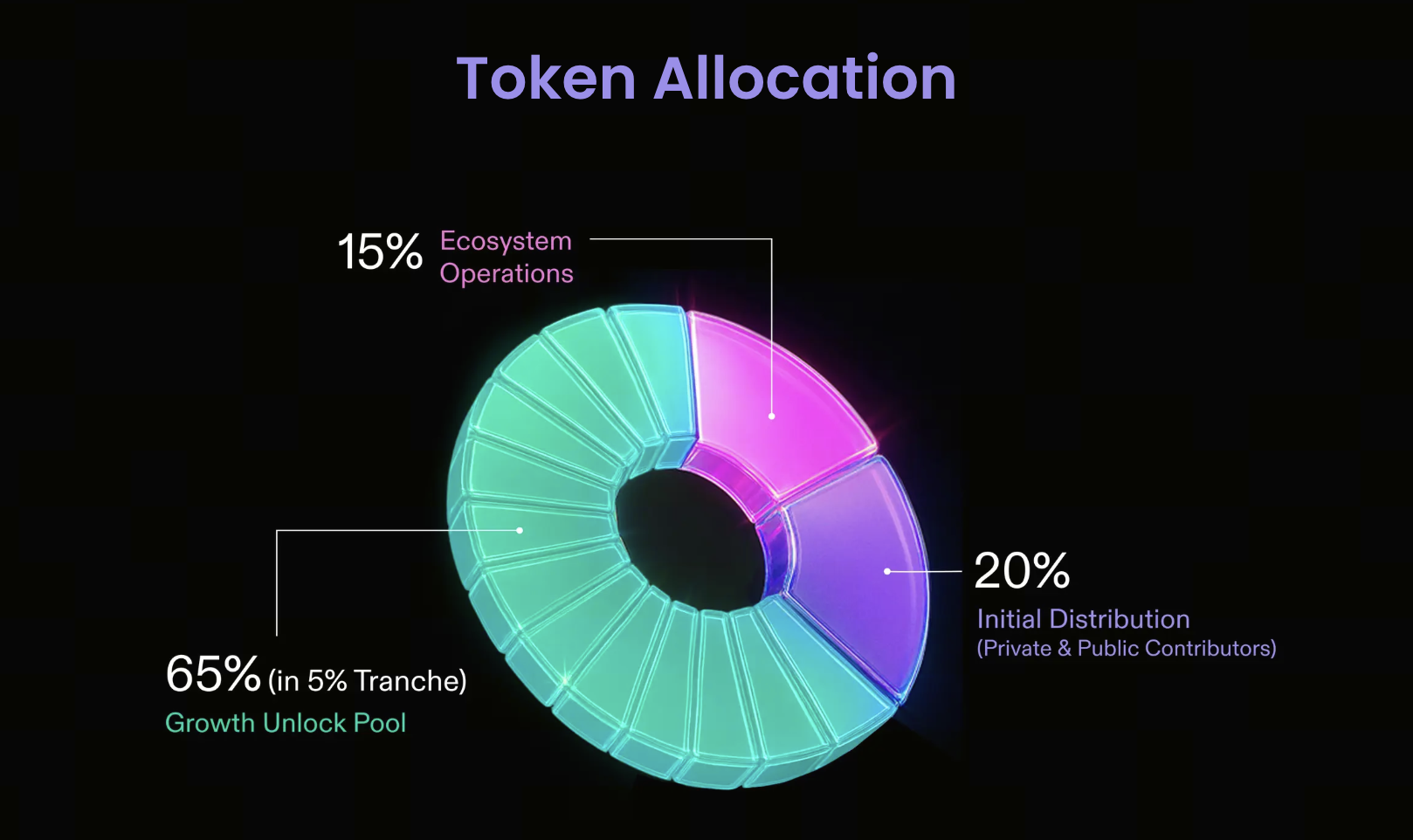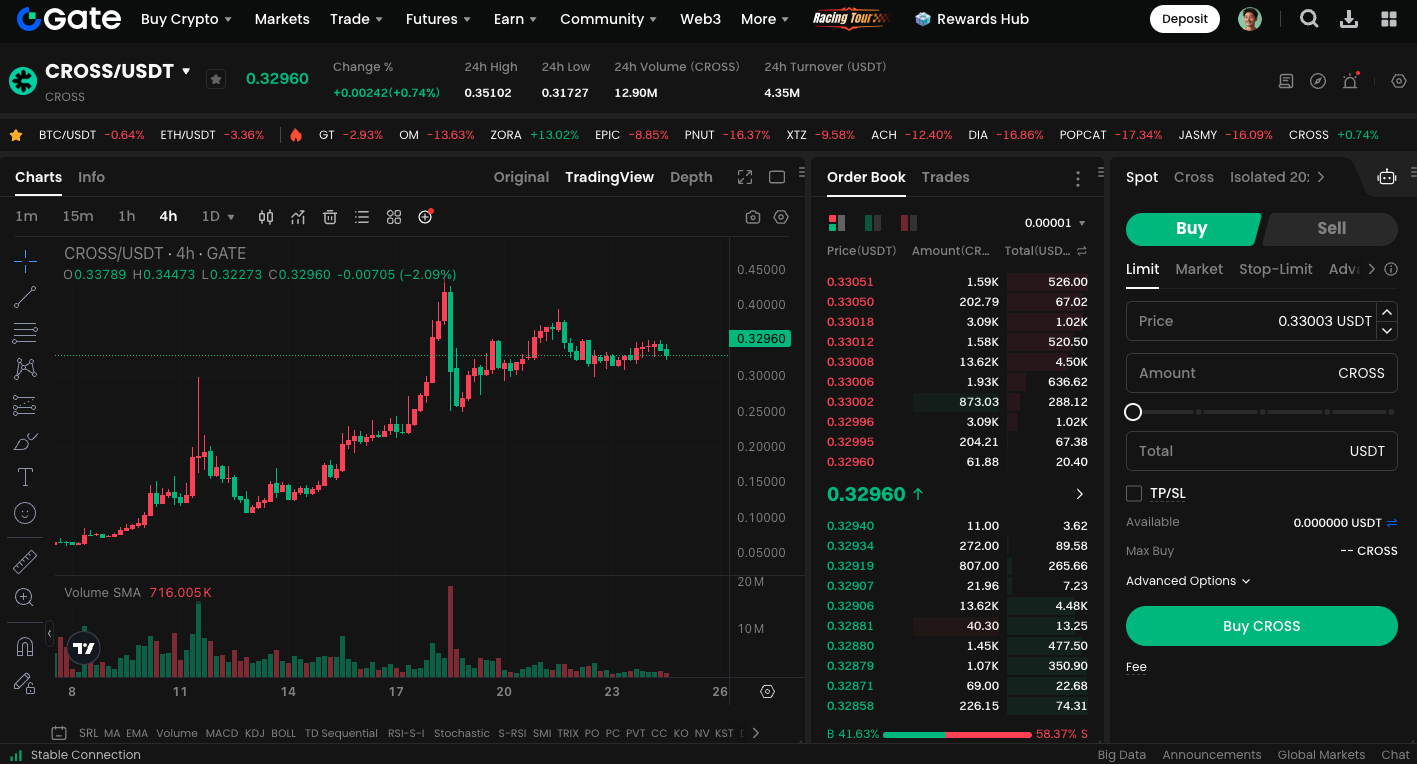What is Cross Protocol (CROSS)?
What is Cross Protocol?

(Source: cross_protocol)
Cross Protocol (Cross) is a universal decentralized protocol focused on enabling seamless, secure native asset transfers and swaps across blockchains. With Cross, users can interact with assets between multiple chains safely and efficiently. They can migrate assets without the need for centralized bridges or third-party custodians.
Core Design of Cross
Cross is built on a trustless architecture with robust technical foundations. Its key features include:
Native Asset Swapping: Cross eliminates the need for wrapped tokens by leveraging protocol-level technology, allowing direct, seamless swaps between native assets on different blockchains.
Cross-Chain Liquidity Aggregation: By pooling assets from multiple chains into a unified protocol, Cross optimizes trading efficiency. It delivers deep, competitive cross-chain liquidity for users.
Fully On-Chain Verification: Every transaction and validation process is performed on-chain and automatically executed by smart contracts, removing centralized risks.
This design ensures user asset security. It significantly lowers technical barriers and operational risks.
Cross Protocol Architecture
Cross employs a modular architecture. Each functional layer is independently upgradeable and extensible. Key components include:
Relay Mechanism: Acts as a cross-chain bridge, ensuring accurate, synchronized transaction data between blockchains.
Validator Mechanism: Utilizes multi-signature and consensus algorithms to guarantee the validity and security of cross-chain transactions.
Liquidity Pools: These serve as sources of cross-chain liquidity, supporting automated native asset swaps.
Through the coordinated operation of these modules, Cross delivers a highly efficient, scalable, and trustless cross-chain protocol layer.
Cross Tokenomics
$CROSS is the foundational token that powers the Cross Protocol ecosystem, with a fixed total supply of 1 billion. Uniquely, Cross adopts a milestone-based unlocking strategy, meaning tokens are released according to actual protocol development progress and community goals achieved—not simply by time. This mechanism ensures flexible and responsible token release and is fully managed by smart contracts, enhancing transparency and credibility.
Token Distribution Model
Cross Protocol carefully structures its token allocation for long-term sustainability and community-driven development. The specific distribution is as follows:
Growth Unlock Pool (65%): The core allocation, gradually released to fund community initiatives, developer grants, participation rewards, and foster overall ecosystem growth.
Private Sale (10.4%): Completed in March 2025 at a fixed price of $0.10 per token, serving as early-stage funding.
Public/Community Sale (9.6%): Scheduled for mid-May 2025 at the same price as the private round, available broadly to the community.
Ecosystem Operations (15%): Reserved for community incentives, partner engagement, and daily operational needs, further enhancing protocol activity and user engagement.

(Source: crosstoken)
This token structure demonstrates Cross’s user-centric values and establishes a strong, stable foundation for the protocol’s long-term operation.
Future Outlook and Application Potential
As the multi-chain ecosystem rapidly expands, there is a growing need for a secure, decentralized protocol to transfer assets across chains. Cross Protocol is well positioned as a pivotal infrastructure for cross-chain interoperability, with a wide range of practical applications, such as:
DeFi Aggregation and Arbitrage: Enables automated native asset swaps for cross-chain arbitrage strategies.
NFT Transfers and Trading: Allows native NFT transfers without wrapping, preserving their inherent value and unique attributes.
GameFi/Metaverse Asset Interactions: Enables players to transfer tokens or virtual items between games and platforms.
You can trade CROSS spot at: https://www.gate.com/trade/CROSS_USDT

Conclusion
Cross Protocol is more than just technology; it’s a philosophy centered on decentralization, community empowerment, and security. As the multi-chain era accelerates, Cross is dedicated to building a truly functional, scalable, and trustless cross-chain protocol—bringing together the Web3 ecosystem instead of leaving it fragmented.





